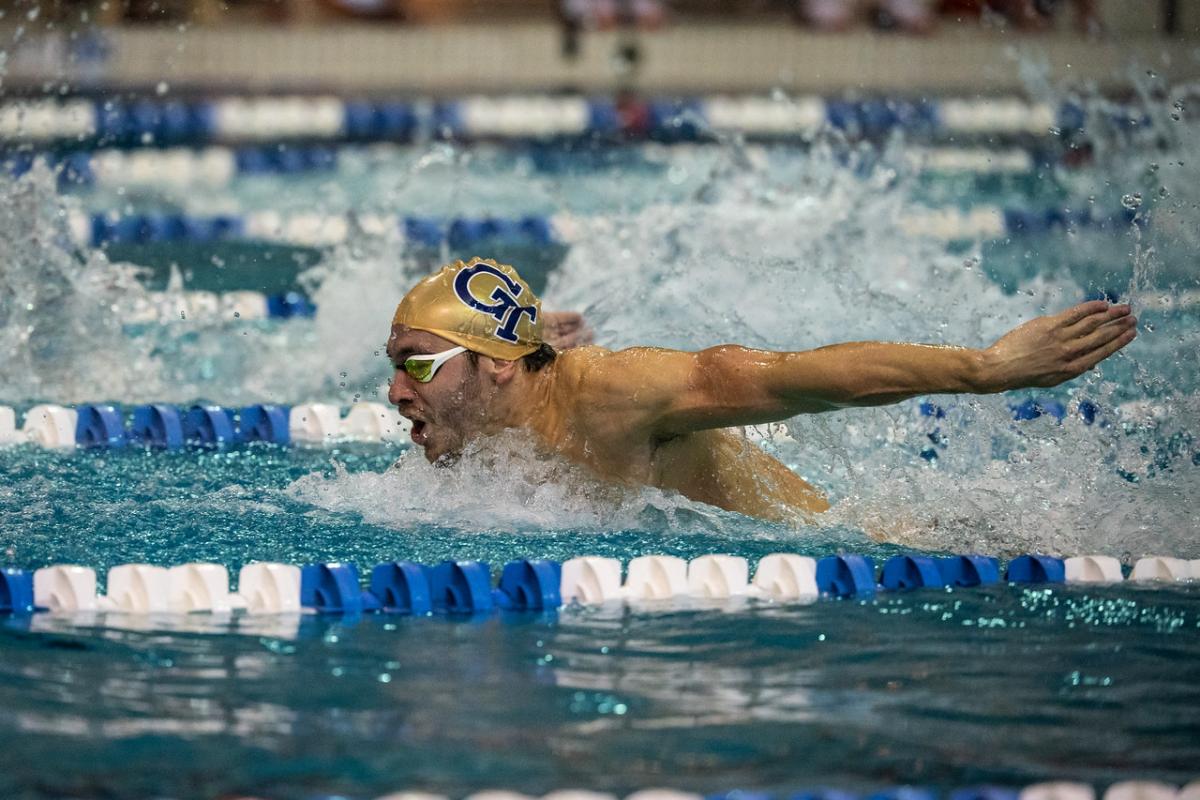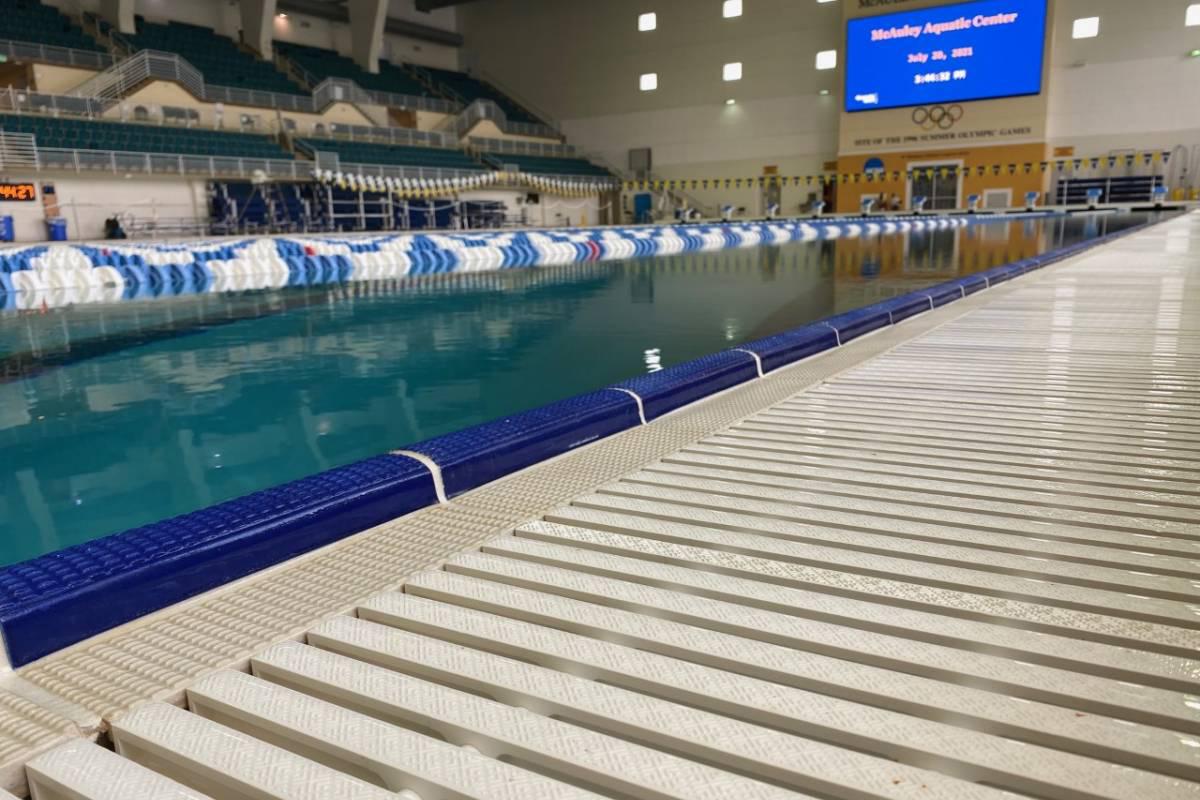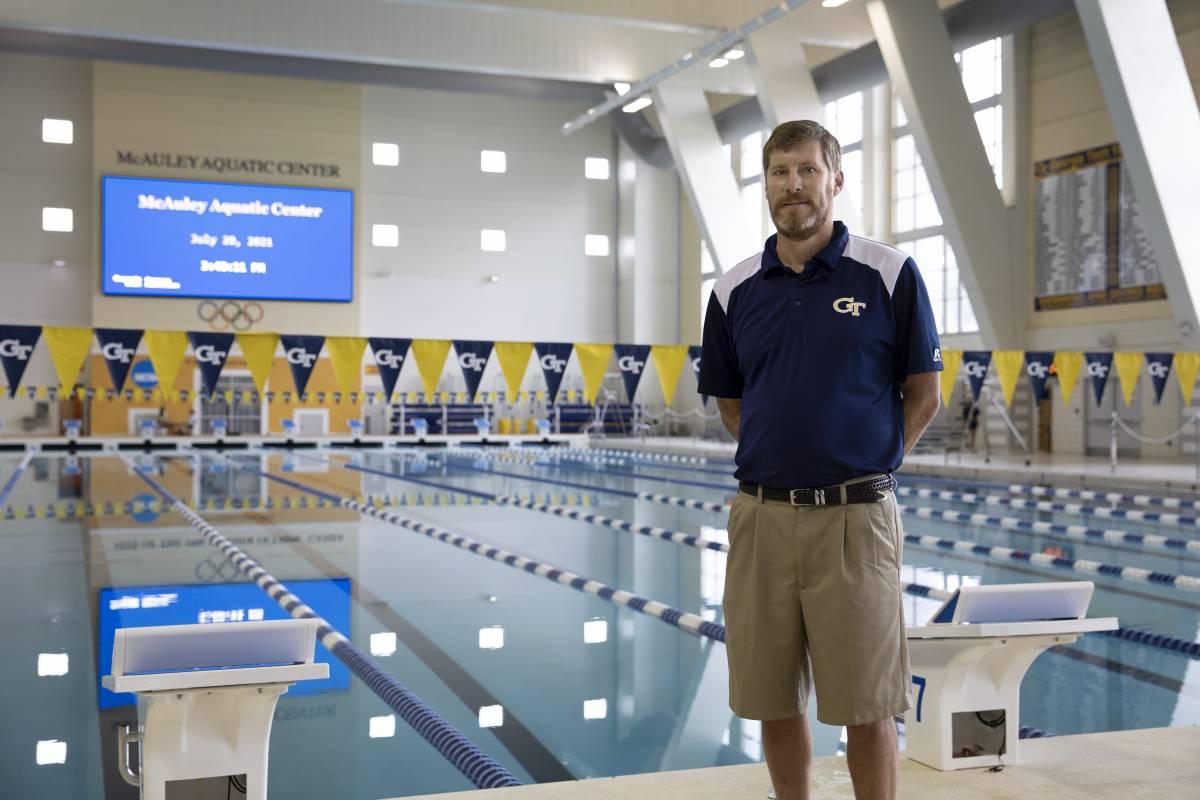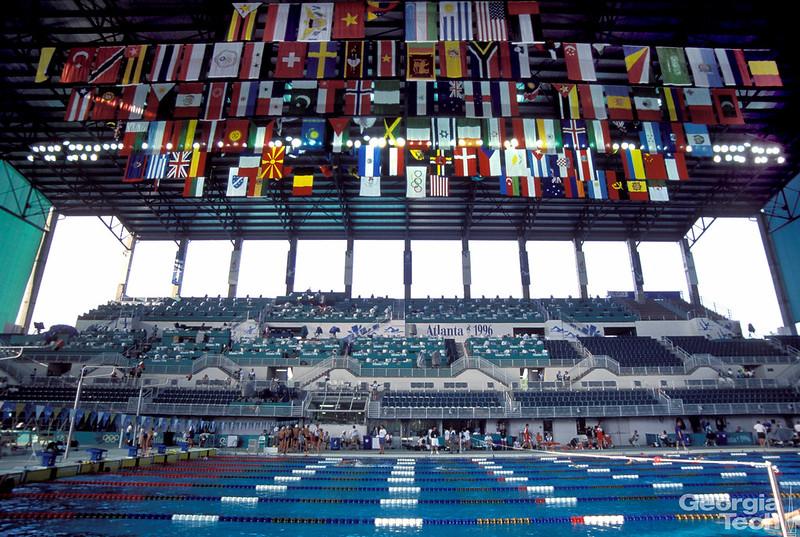28 years after the Atlanta Games, Georgia Tech’s pool remains among the world’s fastest.

What makes a swimming pool fast? It’s not just the fit, strong, and elite athletes competing at the Summer Olympics in Paris. The speed of swimming is also created by the structural engineering and materials used at the venue.
In the United States, there’s no greater example than Georgia Tech’s McAuley Aquatic Center, which hosted the Olympics in Atlanta 28 years ago. The pool continues to be one of the fastest in the world and will host the NCAA Division I men’s and women’s national championships this coming March.
Everything — air flow, depth, and more — are in place with speed in mind.
“There are three primary reasons why the Georgia Tech pool is still among the fastest, even after a quarter century,” said Jud Ready, an adjunct professor in the School of Materials Science and Engineering who teaches a class about the materials and engineering concepts of sports. “Two are at the bottom of the pool and the other is at the sides.”
(text and background only visible when logged in)
(text and background only visible when logged in)
Pool Depth
Georgia Tech’s pool is 3 meters deep (about 9.8 feet).
“When swimmers dive in to start a lap or strike the surface with their hands and feet, the compression waves they create rebound when they hit the bottom of the pool,” said Ready, who is also a principal research engineer at the Georgia Tech Research Institute.
“If the pool is too shallow, the wave energy is able to bounce off the bottom and reach the competitors, negatively affecting their speed. Three meters is deep enough that the reflected wave cannot reach the surface.”
Return Jets
The second reason is the pool’s return jets, which are built into the bottom of the lanes. A typical hotel or backyard pool installs the jets on the side walls. But recirculating about a million gallons of water from jets every four hours would create a tremendous current either favoring or opposing the swimmers.
The Georgia Tech facility returns the water by spreading it along the bottom of the pool through the use of rosettes.
Gutter System
The third design with speed is mind is on the sides of the pool.
“All that water needs somewhere to go, and the gutter system is the third reason why our pool was built to be fast,” said Ready. “When swimmers produce waves that hit the side of the pool, the oversized gutters capture water rather than bouncing that energy back to the athletes and slowing them down. When you’re talking about 0.01 of a second deciding a gold medal instead of a silver, any and all extra friction matters.”
The gutter system must be wide and deep, which is important at the beginning of a race. When all the swimmers hit the surface at the same time, the pool overflows, not unlike dropping several ice cubes into a full glass of water. The gutters can handle the overflow because of the oversized dimensions.
“Water goes in but doesn’t come back out,” said Ready. “If the gutter system was shallow, it would fill up, bounce water back into the pool, and make the surface choppy. This would create resistance against the swimmers, slowing them down.”

The oversized gutters at McAuley capture overflow water.
(text and background only visible when logged in)
(text and background only visible when logged in)
Additional Factors
Other things at Georgia Tech’s venue aren’t as noticeable. For instance, the air systems are constructed to stream air down in a laminar flow from the rafters, across the water surface, and toward large fans installed on the opposite end of the pool. This removes chloramines and keeps the air fresh and odor free during competition.
“The water is also cold — about 77 degrees,” said Ready. “Olympians are working hard and generating heat during competition. Warm water would quickly fatigue muscles, so the temperature is kept lower than what is comfortable for a typical family day at the pool.”

Jud Ready stands at the McAuley Aquatic Center.

The Olympic pool in 1996.
Olympic Swimming History
During his MSE3300 classes about swimming, Ready also teaches about swimsuits, which have certainly come a long way in Olympic competition. Swimmers wore wool suits in the early Games, then went to silk in the 1930s. Nylon and Lycra would soon follow. Suits that mimicked shark skin were unveiled four years after Atlanta at the Sydney Olympics of 2000.
“A controversy occurred in the Beijing Games when non-textile polyurethane suits were introduced,” said Ready. “Numerous records were smashed because the suits greatly increased buoyancy and reduced drag. They’ve since been banned, and swimmers in Tokyo are in microfibers of nylon and spandex.”
Ready was a Georgia Tech graduate student during the Atlanta Games and has fond memories of visiting the Olympic Village, which was housed on campus, and playing laser tag with the Romanian wrestling team.
“Hosting the Summer Games certainly has its privileges. And 28 years after the Olympians left, Georgia Tech continues to reap the benefits of amazing facilities that are used by our student-athletes and campus community.”
(text and background only visible when logged in)
Related Content

Will E. coli Woes Sink Olympic Dreams in Paris?
Georgia Tech water engineer Katherine Graham discusses Paris' polluted Seine River, where Olympic organizers hope to stage long-distance swimming events. The Seine has been closed to swimmers for 100 years because of unhealthy bacteria.